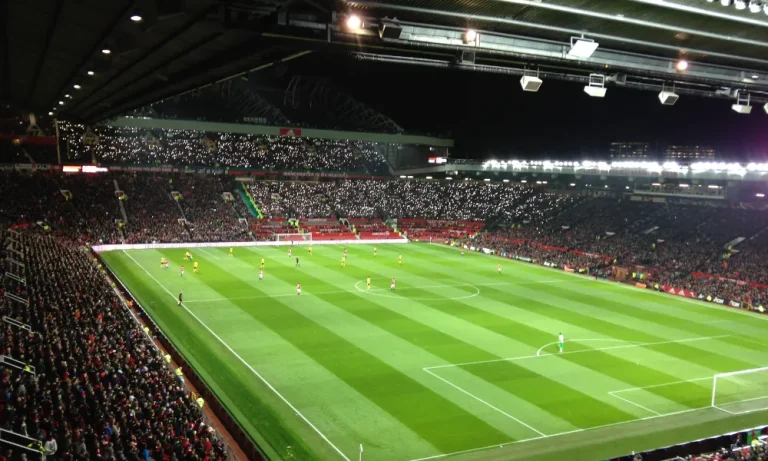Why are Football Goal Posts Called the Woodwork?
When we talk about “The Woodwork” in football, we are referring to the goal posts and crossbar that are traditionally made of wood. These essential components play a crucial role in determining whether a goal is scored or not. Without them, the game of football would lack structure and objective. So, let’s explore the importance of goal posts in the game and discover the origins of this unique term.*
Historical Background
As I delve into the historical background of football goal posts, it’s fascinating to discover the origins of these essential components of the game. The concept of goal posts can be traced back to the early days of football, where the objective was to kick or carry the ball across a designated goal line.
The origins of football goal posts can be found in various ancient ball games played across different cultures. In medieval times, goal posts were often simple markers, such as trees or rocks, that served as boundaries for scoring goals. These improvised goal posts gradually evolved into more structured and standardized forms as the game of football developed.
Over time, the evolution of goal posts witnessed significant changes. In the 19th century, when football was formalized and codified into the sport we know today, goal posts began to take a more defined shape. Initially, they were made of wooden stakes or poles, which were driven into the ground. However, as the game gained popularity and the need for sturdier goal posts arose, more sophisticated designs emerged.
Significance of Wood in Goal Posts
The significance of wood in goal posts is undeniable. Throughout history, wood has been the primary material used in the construction of goal posts, and there are several reasons for its historical use.
The historical use of wood in goal posts can be traced back to the early days of football. Wood was readily available, easy to shape, and affordable, making it the ideal choice for constructing goal posts. Its natural properties, such as strength and durability, also contributed to its popularity.
Using wood in goal post construction offers various benefits. Firstly, wood is a sturdy material that can withstand the impact of the ball and the forces exerted by players. It provides stability and ensures that the goal posts remain upright during intense gameplay. Additionally, wood is relatively lightweight compared to other materials, making it easier to transport and install on different playing surfaces. Moreover, wood has excellent visibility, allowing players and officials to identify the goal posts clearly, even from a distance.
The Terminology
The terminology associated with football goal posts is an interesting aspect of the game, and one term that stands out is “The Woodwork.” Let’s explore the origin of this term and how it became popular in the football vernacular.
The term “The Woodwork” originated from the wooden goal posts used in early football. When a player struck the ball and it hit the goal posts without going into the net, it was said to have hit “The Woodwork.” This phrase was used to describe near misses or shots that came incredibly close to scoring a goal but were denied by the goal frame.
As the game of football evolved, so did the popularity of the term “The Woodwork.” It became ingrained in the football vernacular, used by players, coaches, commentators, and fans alike. The term symbolizes the frustration and disappointment of a missed opportunity, as hitting the woodwork is often seen as a stroke of bad luck.
Psychological Impact
The psychological impact of hitting the woodwork in football cannot be underestimated. It can cause a range of emotions, such as anxiety and frustration, both for the player who struck the ball and the team as a whole.
When a player hits the woodwork, it often leads to a surge of anxiety. The near miss creates a sense of anticipation and hope, only to be met with disappointment as the ball ricochets off the goal frame. This can affect the player’s confidence and decision-making in subsequent attempts, as they may become more hesitant or overly eager to avoid hitting the woodwork again.
Furthermore, hitting the woodwork can also induce frustration. It represents a missed opportunity, a moment where success was within reach but narrowly eluded the player. This frustration can manifest in a loss of focus, increased pressure, or even a sense of desperation to score. It may also impact the team as a whole, as the collective frustration can influence the overall performance and morale.
Memorable Moments
When it comes to memorable moments in football, hitting the woodwork has provided fans with some iconic instances that are etched in football history. Let’s explore a few of these moments and the famous matches or players associated with the woodwork.
One memorable instance of hitting the woodwork occurred during the 2002 FIFA World Cup. In the quarter-final match between Brazil and England, English captain David Beckham struck a free-kick that hit the crossbar, denying England a crucial goal. This near miss became an iconic moment, symbolizing the fine margins between success and defeat in football.
Another famous match associated with the woodwork is the UEFA Champions League final in 1999 between Bayern Munich and Manchester United. In the dying moments of the game, Bayern Munich was leading 1-0 when Manchester United’s Teddy Sheringham and Ole Gunnar Solskjær both scored goals, securing a dramatic comeback victory. The winning goal by Solskjær came off a corner kick and struck the woodwork before finding the back of the net, adding to the dramatic nature of the moment.
Modern Innovations
In recent years, there have been modern innovations in goal post construction, leading to the introduction of alternative materials other than wood. Let’s explore the advantages and disadvantages of using these materials in football goal posts.
One of the main advantages of using materials other than wood, such as metal or synthetic compounds, is durability. Unlike wood, these materials are less prone to rotting, warping, or splintering, allowing goal posts to withstand harsh weather conditions and heavy use without significant damage.
Another advantage is the potential for increased safety. Alternative materials can be designed to be lighter in weight, reducing the risk of injury in case of collisions with players. Additionally, some materials offer better resistance to bending or breaking, ensuring the goal posts remain intact during high-impact situations.
However, there are also disadvantages to consider. Alternative materials may not have the same aesthetic appeal as traditional wooden goal posts, which can impact the visual experience of the game. Additionally, the cost of alternative materials may be higher, making it more challenging for lower-budget clubs or organizations to invest in these modern innovations.
FAQs
Why are football goal posts called the woodwork?
Football goal posts are called the woodwork because traditionally, they were constructed using wooden materials, such as timber or lumber.
Are all football goal posts still made of wood?
No, not all football goal posts are made of wood. Modern innovations have introduced alternative materials like metal or synthetic compounds for goal post construction.
What are the advantages of using wood for goal post construction?
Wood is a readily available and easily workable material. It provides a traditional aesthetic appeal and can withstand normal wear and tear on the field.
Are there any disadvantages to using wood for goal posts?
Yes, wood can be susceptible to rotting, warping, or splintering over time. It may also require more maintenance compared to alternative materials.
Why do some people prefer wooden goal posts over alternatives?
Some people prefer wooden goal posts for their traditional look and feel, as well as the nostalgic association with the history of the sport.
Conclusion
football goal posts, affectionately known as “The Woodwork,” hold immense significance in the game. They provide structure, define the scoring area, and add an element of excitement and frustration. The term “The Woodwork” has become deeply ingrained in football vernacular, symbolizing near misses and moments of anguish for players and fans alike.




